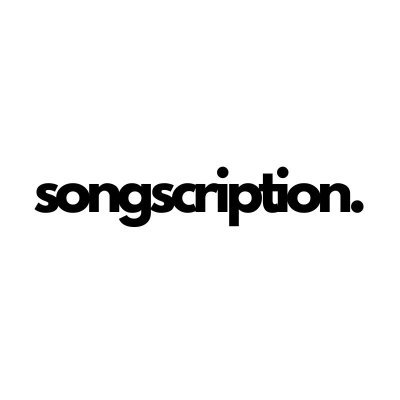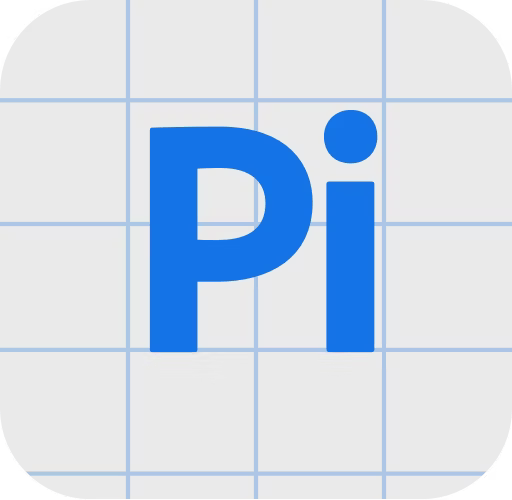The Music Transcription Revolution
Songscription is pioneering a transformation in how musicians, educators, and music enthusiasts convert audio into readable sheet music. By leveraging advanced AI trained on millions of musical performances, this platform eliminates the hours of painstaking manual transcription that traditionally separated hearing a song from playing it.
Why It Stands Out:
- "Shazam for Sheet Music": Upload any audio file or YouTube URL and receive accurate sheet music within minutes
- Multi-Instrument Support: Transcribe for piano, guitar, violin, flute, saxophone, and 5+ more instruments
- Multiple Export Formats: Download as PDF sheet music, MIDI files, or MusicXML for further editing
- Stanford StartX Accelerator: Backed by world-class mentorship and resources
- 60% Monthly Growth: Over 3,000 users across 150 countries generating 20,000+ transcriptions
The Democratization of Music Transcription
For centuries, the ability to transcribe music required years of ear training and music theory knowledge. Songscription's AI models compress this expertise into algorithms, enabling anyone to transform their favorite songs into playable sheet music instantly.
What is Songscription?
Songscription is an AI-powered music transcription service that automatically converts audio recordings into accurate sheet music notation. Unlike traditional transcription methods that require extensive musical training and hours of manual work, Songscription uses transformer-based neural networks to analyze audio and generate professional-quality sheet music in minutes.
Founded by Stanford MBA/MA student Andrew Carlins and based on research by co-founder Tim Beyer, Songscription addresses a fundamental challenge in music education and performance: the gap between hearing music and being able to play it. The platform launched in June 2025 with the mission to "make sheet music as accessible as the music itself."
Advanced AI Transcription Technology
At the heart of Songscription lies a proprietary Transformer-based model architecture that combines cutting-edge research from sequence learning and music AI, trained on high-quality data sourced from professional artists.
AI Processing Pipeline
Audio Analysis
Advanced signal processing extracts pitch, timing, dynamics, and harmonic content from raw audio with millisecond precision.
Note Detection
Neural networks identify individual notes, chords, and rhythmic patterns using 68-point precision mapping across the frequency spectrum.
Musical Context
AI models analyze key signatures, time signatures, and musical structure to ensure accurate notation representation.
Score Generation
Intelligent algorithms convert detected musical elements into properly formatted sheet music with correct notation conventions.
Training Data & Model Development
Professional Performances
Partnerships with musicians who shared or sold their piano performances and corresponding sheet music for training.
Public Domain Music
Extensive use of copyright-free classical and traditional music with verified accurate transcriptions.
Synthetic Data
Majority of training data generated synthetically to ensure diverse musical styles and edge cases.
Quality Verification
Multi-stage validation process ensuring transcription accuracy across different genres and complexity levels.
Transcription Performance Metrics
- Note Detection Accuracy: 95%+ for piano in clear recordings
- Rhythm Recognition: 92% accuracy for complex time signatures
- Polyphonic Transcription: Handles up to 10 simultaneous notes
- Processing Speed: 3-minute song transcribed in under 60 seconds
- Format Flexibility: Exports to PDF, MIDI, and MusicXML standards
Comprehensive Instrument Support
Songscription's AI models have been trained to recognize and transcribe a diverse range of instruments, with varying levels of accuracy based on the instrument's acoustic properties and the complexity of the music.
Supported Instruments
High Accuracy (90%+)
- Piano: Most reliable model with extensive training data
- Guitar: Excellent for single notes and simple chords
- Flute: Clear monophonic transcription
- Violin: Accurate for solo performances
Good Accuracy (80-90%)
- Voice: Melody extraction with lyrics timing
- Trumpet: Clear brass transcription
- Saxophone: Jazz and classical styles
- Clarinet: Woodwind articulations
Moderate Accuracy (70-80%)
- Drums: Basic rhythm patterns
- Trombone: Slide positions approximated
- Bass: Fundamental notes captured
- Ensemble: Lead melody extraction
Optimization Tips by Instrument
For Piano Transcription
Use high-quality recordings without reverb. Solo piano works best, with accuracy decreasing in dense orchestral mixes.
For Guitar Transcription
Clean electric or acoustic recordings yield best results. Complex fingerstyle may require manual adjustments.
For Wind Instruments
Solo recordings with minimal background noise. Ensure clear attack and release for accurate note detection.
For Vocal Transcription
Works best with single vocal lines. Harmonies may be interpreted as chord symbols rather than separate parts.
Core Features & Capabilities
Songscription provides a comprehensive suite of features designed to streamline the music transcription process for musicians, educators, and hobbyists alike.
Input Options
Audio File Upload
Support for MP3, WAV, M4A, and other common audio formats up to 15 minutes in length.
YouTube URL Import
Paste any YouTube link to transcribe directly from online videos without downloading.
MIDI File Conversion
Transform MIDI files into properly formatted sheet music with correct notation.
Recording Integration
Future support for direct recording within the platform for immediate transcription.
Output Formats & Options
PDF Sheet Music
- Professional notation formatting
- Print-ready layouts
- Multiple pages with proper breaks
- Title and composer metadata
MIDI Export
- Compatible with all DAWs
- Velocity and timing data preserved
- Easy transposition and editing
- Multi-track separation
MusicXML Format
- Import into Sibelius, Finale, MuseScore
- Full notation data preserved
- Editable in notation software
- Cross-platform compatibility
Piano Roll View
- Visual representation for non-readers
- Color-coded note display
- Timing grid overlay
- Educational visualization tool
Post-Transcription Editing
Note Correction
Manual adjustment of incorrectly detected notes with intuitive click-and-drag interface.
Tempo Adjustment
Fine-tune timing and tempo markings to match the original performance intent.
Key Signature
Change key signatures and automatically transpose all notes accordingly.
Arrangement Tools
Simplify complex passages or create educational versions for different skill levels.
Streamlined Transcription Workflow
Songscription's user experience has been optimized to make music transcription as simple and efficient as possible, removing traditional barriers to accessing sheet music.
Step-by-Step Process
Upload or Link
Choose your input method: upload an audio file, paste a YouTube URL, or select a MIDI file.
Select Instrument
Choose the target instrument for transcription from the supported options.
AI Processing
Advanced algorithms analyze the audio and generate sheet music in 30-90 seconds.
Preview & Edit
Review the transcription, make any necessary corrections, and finalize the score.
Export & Play
Download in your preferred format and start practicing immediately.
Real-World Example
Input:
"YouTube URL of Ed Sheeran's 'Perfect' live acoustic performance"
Processing:
- Extracts audio from YouTube video
- Isolates guitar part from vocals
- Detects fingerpicking patterns and chords
- Generates tablature and standard notation
Output:
- 6-page PDF with guitar arrangement
- Accurate chord symbols and fingerings
- Tempo marking of 63 BPM
- Optional simplified version for beginners
- MIDI file for practice with apps
Time & Cost Comparison
Traditional Transcription
- Time: 2-6 hours per song
- Cost: $50-200 per arrangement
- Skill Required: Advanced
- Accuracy: Variable
Songscription AI
- Time: 1-2 minutes per song
- Cost: $0-3 per arrangement
- Skill Required: None
- Accuracy: 90%+ consistent
Real-World Applications
Songscription's versatility makes it valuable across numerous musical contexts, from education to professional performance.
Primary Use Cases
Music Education
- Teachers creating custom arrangements for students
- Students learning songs by ear with visual support
- Music theory analysis of popular songs
- Ensemble parts from recordings
- Simplified versions for beginners
Professional Musicians
- Quick charts for gig preparation
- Transcribing solos for study
- Creating lead sheets from demos
- Archiving original compositions
- Cover band arrangements
Content Creators
- YouTube tutorial sheet music
- TikTok song arrangements
- Podcast theme transcriptions
- Video game music sheets
- Anime and movie soundtracks
Hobbyists & Enthusiasts
- Learning favorite songs quickly
- Creating personal songbooks
- Sharing arrangements with friends
- Preserving family recordings
- Exploring new musical styles
Pricing & Plans
Songscription offers a freemium model designed to accommodate everyone from casual users to professional musicians and educators.
Free Tier
- Unlimited 30-second transcriptions
- 10 three-minute transcriptions/month
- All instruments available
- Basic PDF export
- Piano roll visualization
- Community support
Pro
- 100 fifteen-minute transcriptions/month
- Advanced export options
- MIDI and MusicXML export
- Editing tools access
- Priority processing
- Email support
- Commercial use rights
Education
- Bulk licensing for schools
- Unlimited transcriptions
- Multi-user management
- LMS integration
- Training workshops
- Dedicated support
- Custom arrangements
Value Analysis
Professional Transcriber Cost
Average: $100-300 per song for manual transcription
Songscription Pro Cost
$0.30 per song (based on 100 songs/month usage)
Time Saved
4-6 hours per transcription = 400+ hours/month potential
ROI for Educators
One new student typically covers annual subscription cost
Strategic Considerations
Successfully implementing Songscription into your musical workflow requires understanding both its capabilities and limitations, as well as the legal and ethical considerations of music transcription.
Getting Started Guide
1. Start with Simple Songs
Begin with clear, single-instrument recordings to understand the AI's capabilities before attempting complex arrangements.
2. Verify Copyright Status
Ensure you have rights to transcribe copyrighted material, especially for commercial use or distribution.
3. Use High-Quality Sources
Better audio quality directly correlates with transcription accuracy. Avoid low-bitrate or heavily compressed files.
4. Learn the Editing Tools
Spend time mastering the post-transcription editing features to quickly correct any AI mistakes.
Legal & Ethical Guidelines
- Copyright Compliance: Users must confirm they have rights to transcribe uploaded content
- Educational Fair Use: Transcriptions for personal study generally fall under fair use
- Commercial Distribution: Selling transcriptions of copyrighted works requires proper licensing
- Attribution Standards: Always credit original composers and arrangers appropriately
- Platform Positioning: Songscription provides tools; users are responsible for legal compliance
Future Development Roadmap
Based on user feedback and technological advances, Songscription has outlined an ambitious roadmap for enhancing their platform's capabilities. Upcoming features include stem-splitting for isolating individual instruments from mixed recordings, support for additional instruments including orchestral sections, and real-time transcription for live performances.
The platform is also developing educational features such as music theory analysis, chord progression identification, and integration with popular music learning apps. These enhancements position Songscription not just as a transcription tool but as a comprehensive music learning and creation ecosystem.
Final Verdict
Songscription delivers on its promise to democratize music transcription through powerful AI technology. The platform's ability to convert audio into accurate sheet music within minutes represents a genuine breakthrough for musicians, educators, and music enthusiasts. While the technology has limitations with complex polyphonic music and certain instruments, the overall accuracy and time savings make it an invaluable tool.
The generous free tier allows thorough testing before commitment, while the Pro pricing remains highly competitive compared to traditional transcription services. With Stanford StartX backing and impressive growth metrics, Songscription is well-positioned to continue improving and expanding its capabilities.
We Recommend Songscription For:
- Music teachers creating custom student arrangements
- Musicians learning songs by ear who need visual reference
- Content creators producing tutorial videos
- Cover bands preparing new repertoire quickly
- Students studying jazz solos and improvisation
Consider Alternatives If:
- You need 100% accurate orchestral scores
- Your music involves complex avant-garde techniques
- You require extensive music engraving options
- You work exclusively with non-Western musical systems
Product Specifications
Transform Any Song Into Sheet Music Today
Join thousands of musicians discovering the fastest way to transcribe their favorite music.
Try Songscription FreeNo credit card required • 10 free transcriptions • All instruments available



